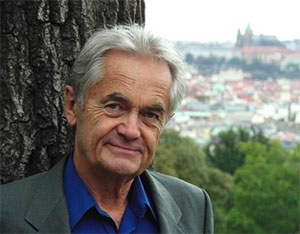by Daniel Hathaway

“I don’t want to say this is my swan song,” Paukert said in a telephone conversation, “but I want to pay homage to St. Paul’s Church and its generous donors with this festival. They have maintained this music program all the way back to Walter Blodgett, who was kind of a legend here.”
St. Paul’s Church moved to the Heights from 40th and Euclid in 1928, but the Great Depression and World War II delayed its building plans beyond the construction of a parish hall until 1952. Blodgett, who was also Paukert’s predecessor at the Museum, was in charge of the music at St. Paul’s when the organ by Walter Holtkamp, Sr. was installed in the recently-completed nave. The other three instruments to be featured during the Festival were purchased under Paukert’s watch, and each comes with its own story.

The two came together again in the early 1980s at an organ class in Pistoia, Italy, when Hradetzky had become interested in historical Italian instruments. “I was already at St. Paul’s, and there was a vacant balcony where I envisioned a small organ,” Paukert said.


The church’s Italian harpsichord followed the acquisition of a similar instrument for the Art Museum. “I had asked Gustav Leonhardt who would be the best builder to approach for CMA,” Paukert recalled. The German builder Matthias Griewisch was one of the three Leonhardt suggested, but his waiting list was five years long, so the Museum settled on another maker instead. “Some years later, thanks to a memorial gift, I got permission to sell the domestic harpsichord St. Paul’s already owned and order one from Griewisch,” Paukert said.

Tůma will be back on the bench of the Holtkamp organ on Saturday afternoon, September 16 at 4:00 pm for what Paukert describes as the organist’s “parody” of Bedřich Smetana’s Má Vlast. “It’s kind of a postmodern take on Smetana which has evolved into a great paraphrase of all six tone poems. I heard him play it three months ago in Smetana’s birthplace, where he received an ovation from over 700 people.” (Download Tůma’s program notes here.)




Paukert said he’s enjoyed putting this festival together. “I’ve missed all the activities and programs I used to have at the Museum,” he said. “And thanks to support from the Ingalls Foundation and the Charles H. Teare and Clifford K. Kern Music fund at the Cleveland Foundation, it’s free to the public and won’t cost the church anything.”
Published on ClevelandClassical.com September 12, 2017.
Click here for a printable copy of this article



